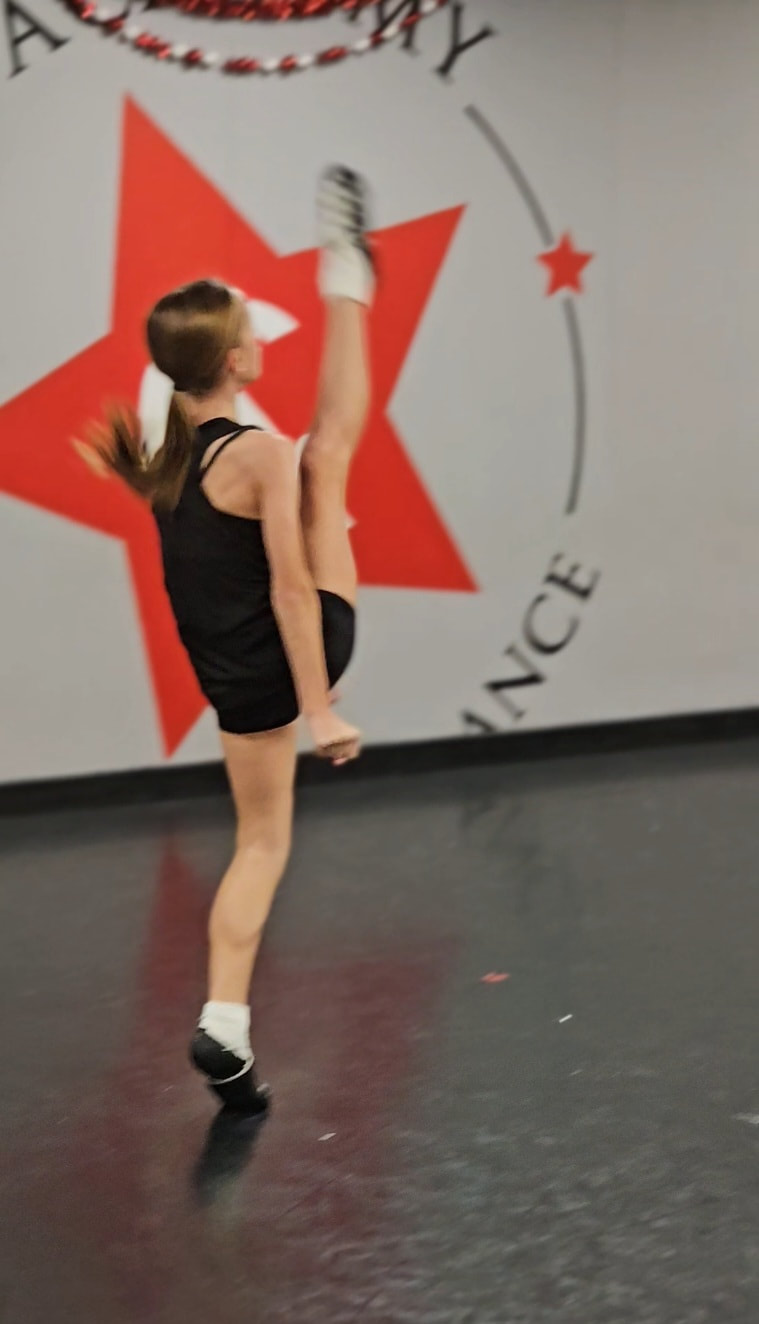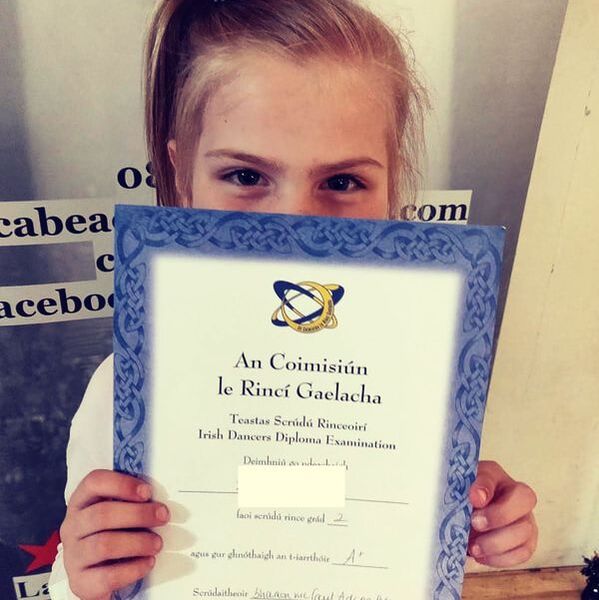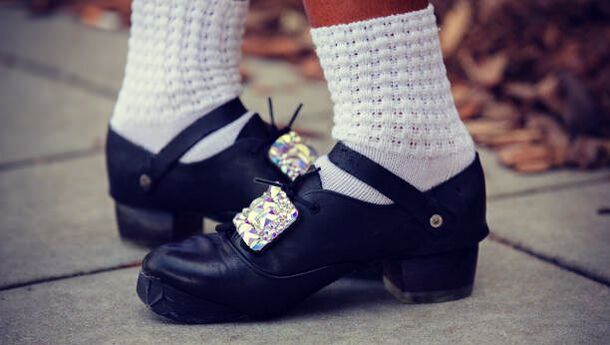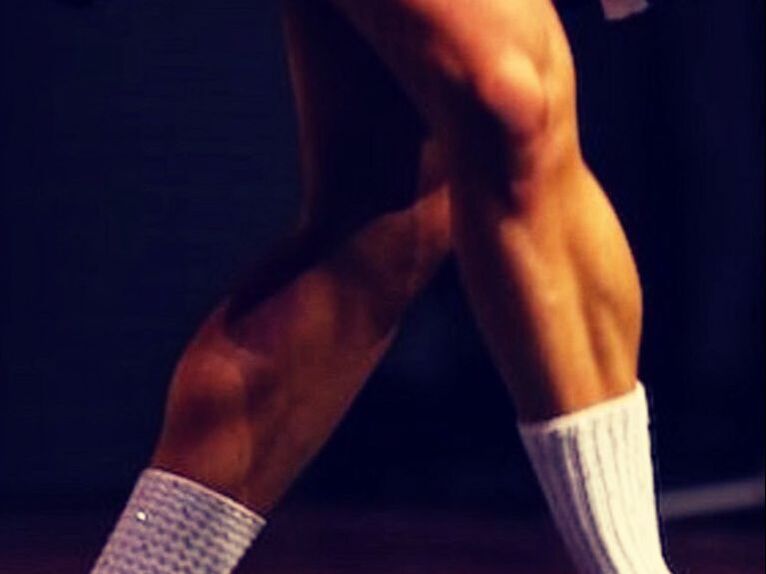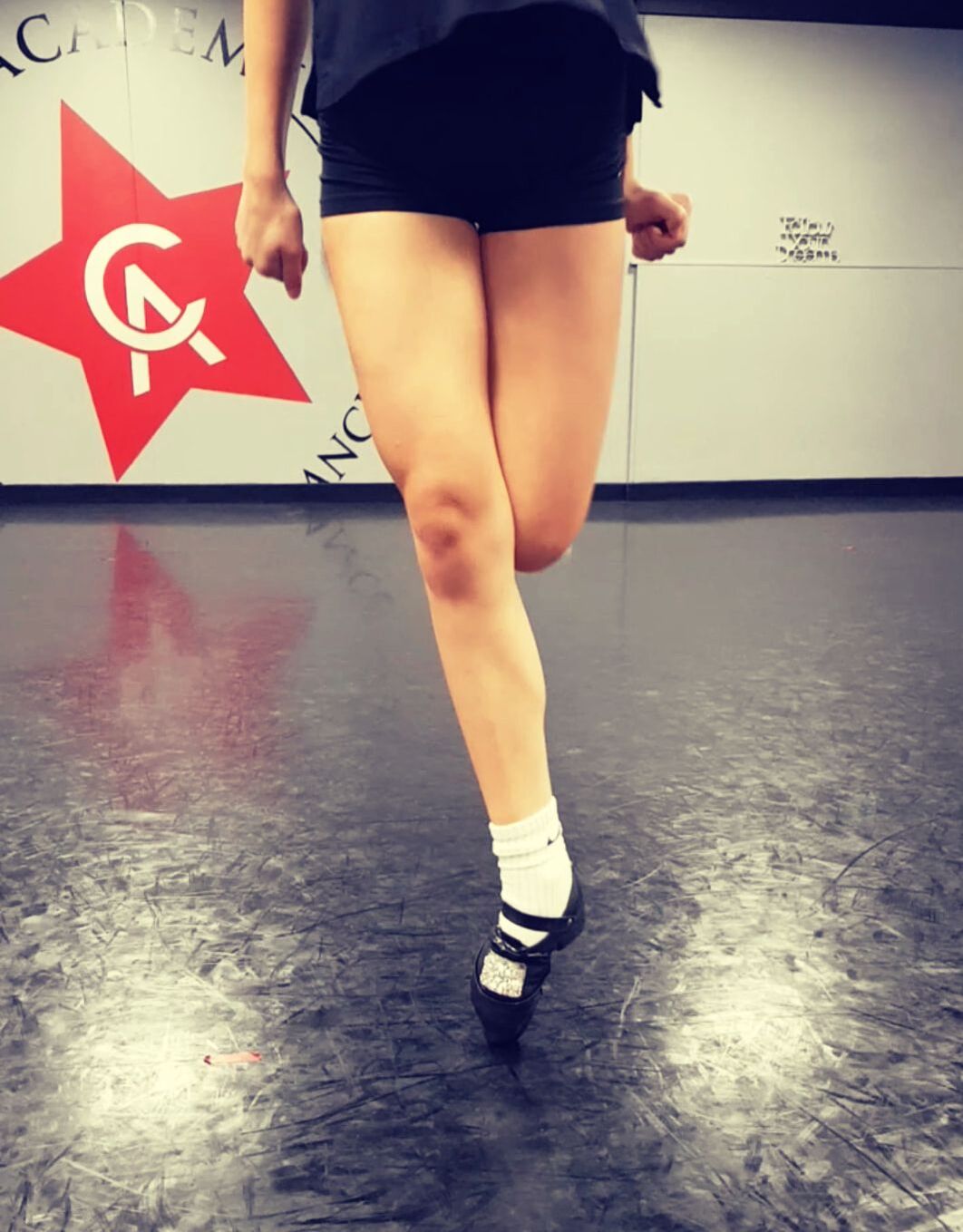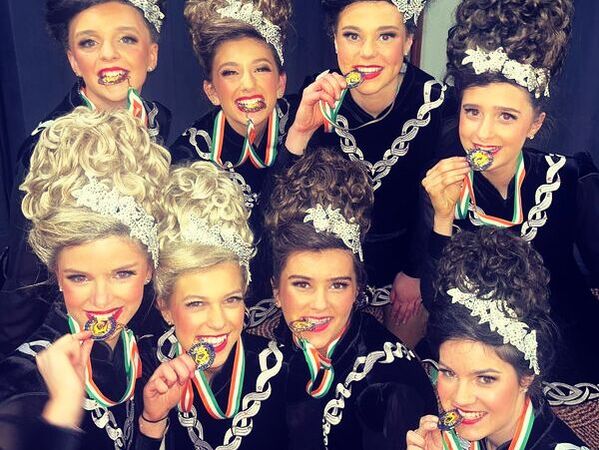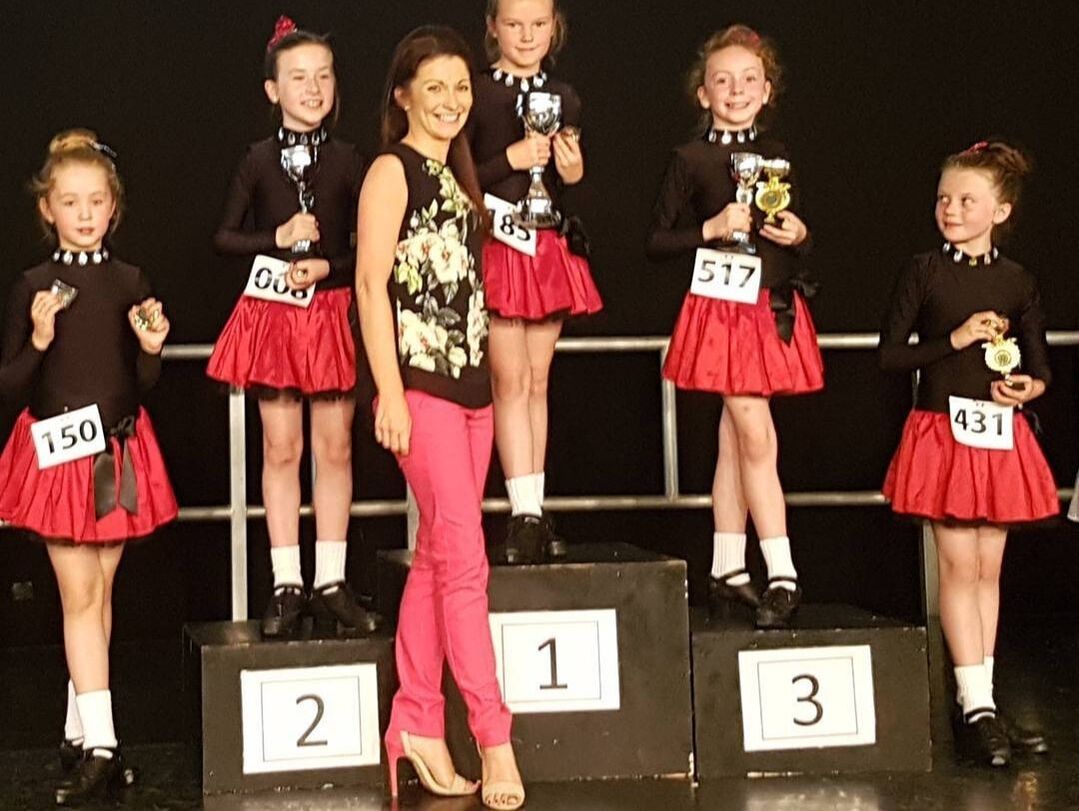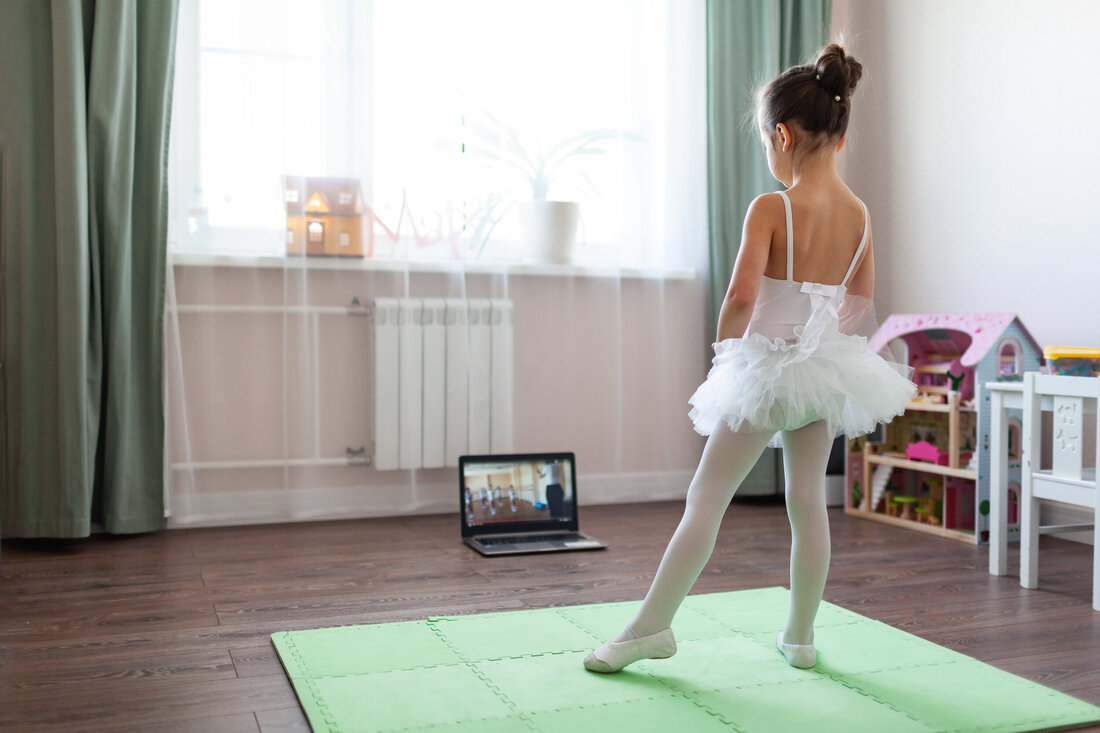|
In Irish dance, achieving excellence isn't just an ambition; it's a lifestyle. Let's explore three fundamental principles that can propel us toward success in the world of Irish dance. 1. Consistent Presence – The Foundation of Progress
An essential building block for success in Irish dance is consistent attendance. Your physical and mental presence in each class is crucial for growth. Consider every session as a rehearsal for a grand performance. Punctuality and regularity aren't mere formalities; they are the bedrock upon which improvement is constructed. By consistently showing up, you create an environment for refining your skills, acquiring new techniques, and absorbing the insights of your instructors. You can't be disappointed at the next feis if your attendance wasn't good over the preceding months. 2. Diligent Effort – Elevating Every Movement Beyond just showing up, the key to excellence in Irish dance lies in wholehearted effort. Treat every dance, every round, and every class as if you're competing on the world stage. Success in Irish dance isn't about going through the motions; it's about investing effort that distinguishes champions. Embrace hard work, refine each step until it shines, and approach each practice session with the intensity of a dancer on the brink of victory. In Irish dance, mediocrity is the adversary – give it your all, and success will inevitably follow. 3. Mindful Focus – The Catalyst for Improvement Here lies the secret to transformation: focus. Merely being present and working hard isn't enough; you must engage your mind to elevate your performance. Many dancers go through routines without a conscious effort to improve. True champions, on the other hand, enter each class with the intention of making an improvement, however small, before they leave class. Challenge yourself to surpass yesterday's performance. Concentrate on the subtleties that make Irish dance an art form. Infuse purpose into every movement, and with each repetition, strive for perfection. Consistently adopting this approach over time leads to an unstoppable trajectory of improvement. Conclusion: Unleashing Excellence In the quest for excellence in Irish dance, these three principles – consistent attendance, diligent effort, and mindful focus – act as a transformative guide. When adhered to consistently, they create a compounding effect, propelling dancers to a level that is unparalleled. So, dancers, be present, work diligently, focus mindfully, and let the rhythm of excellence lead you to triumph on the grandest stages.
0 Comments
Learn how to get the perfect Irish Dance competition look! If you are just starting out, nailing the perfect hair bun is a crucial aspect of your presentation. In this video, we'll guide you through step-by-step instructions and share valuable tips to ensure your bun is not only competition-ready but also poised to withstand even the most rigorous routines. So grab your hairpins, brush, and let's get started on crafting that flawless Irish Dance bun! Irish Dance Grade Exams: A Pathway to Teaching Dance
Irish Dance Grade Exams offer a meticulously designed framework for students to pursue a distinguished diploma in Irish Dance. Comprising 12 progressively challenging levels, these exams culminate in the prestigious diploma awarded by An Coimisiún Le Rincí Gaelacha, the globally recognised authority on Irish Dance. Throughout this journey, students must showcase their proficiency in Solo Dance, Ceili Dance, Music, and the Irish Language. Each candidate undergoes a comprehensive evaluation by an examiner from An Coimisiún Le Rincí Gaelacha and receives a thorough written assessment of their exam performance. Additionally, students are presented with a certificate upon successfully completing each grade. A Gateway to Teaching: The TCRG Exam To qualify for the Teagascóir Coimisiún Le Rinci Gaelacha Exam (TCRG exam), candidates must successfully complete all 12 grades. This esteemed teaching qualification equips individuals to instruct Irish Dance, opening doors to opportunities worldwide. Cabe Academy: A Holistic Approach At Cabe Academy, we take a distinctive approach. Unlike schools solely focused on competition, grade examinations are obligatory for every student. We firmly believe that this commitment is pivotal in nurturing well-rounded dancers capable of attaining a diploma in Irish Dance and a globally recognised teaching qualification. Beyond Dance: Educational Benefits In select jurisdictions, achievements in grade exams may contribute towards earning points for college or university admissions. Explore further details here. Additionally, UCAS provides a comprehensive report on this subject here. Embark on a Journey of Excellence Irish Dance Grade Exams offer a structured path toward mastery, culminating in a diploma that holds international acclaim. Whether aspiring to perform on global stages or teach the art form, this journey promises invaluable rewards. Join us at Cabe Academy and unlock the full potential of Irish Dance through our comprehensive grade examination program. Introduction
Breaking in new Irish dancing hard shoes can be a crucial step in your dancing journey. However, doing it wrong can lead to painful blisters and lost practice time. In this guide, we'll walk you through some essential do's and don'ts to ensure a comfortable and blister-free experience. The Do's: 1. Prioritise Blister Prevention Prevention is the key to success. Avoiding blisters should be your number one objective. Blisters can set you back weeks in practice time, so take every precaution to prevent them. 2. Invest in Blister Socks Blister socks are a must-have. These specialized socks provide an extra layer of protection for your feet, reducing friction and minimizing the chances of developing blisters. Many advanced dancers swear by them, even when not breaking in new shoes. 3. Wear Poodle Socks Poodle socks are thick and cushioned, providing added comfort and support for your feet. Avoid wearing thin socks, especially when breaking in new shoes, as they can leave you susceptible to blisters. Remember to always wear your poodle socks. 4. Warm Your Shoes Before attempting to break in your hard shoes, warm them up by placing them on a radiator or inside a hot press. This softens the material, allowing it to mould to the shape of your feet more easily. Repeat this process several times for best results. 5. Wear Them Around the House Put on your hard shoes while at home, even if you're not actively practicing. Engage in mundane tasks like watching TV or reading a book. The warmth from your feet will help the shoes adapt to your foot shape, making them increasingly comfortable over time. The Don'ts: 1. Don't Be a Hero Pushing through the pain during class may seem like a show of determination, but it's a sure-fire way to develop painful blisters. Remember, it's better to prevent blisters than to deal with the consequences later. 2. Don't Expect Shoes to Break Themselves In New heavy shoes won't magically become comfortable on their own. You must put in the effort to break them in. Avoid the mistake of wearing them for just a few minutes in class and then asking to switch back to soft shoes. Take action and use the techniques mentioned above to properly break in your hard shoes. Conclusion Breaking in Irish dancing hard shoes is a crucial step in your dancing journey. By following these do's and don'ts, you can ensure a comfortable and blister-free experience. Remember, prevention is key, so invest in blister socks, wear poodle socks, warm your shoes, and wear them around the house. Avoid pushing through pain and expecting the shoes to break in themselves. With these tips, you'll be well on your way to dancing comfortably and confidently in your hard shoes. Irish dance and bodybuilding, at first glance, may appear worlds apart, but delve deeper, and you'll uncover intriguing parallels between these seemingly unrelated disciplines. Both demand unwavering commitment and the belief that true achievement arises from consistent, long-term effort. In this piece, we'll explore how Irish dance mirrors bodybuilding and extract valuable lessons from these shared attributes.
Prolonged Consistent Effort In both Irish dance and bodybuilding, immediate gratification is a rare phenomenon. The journey isn't about shortcuts or quick fixes, but rather about the dedication to prolonged progress. Hours are invested in perfecting footwork, form, and choreography in Irish dance, while bodybuilders devote years to refining their physique through rigorous training, nutrition, and discipline. Both communities understand that genuine excellence requires time and steady perseverance. It's the willingness to show up consistently, even when progress feels elusive. Just as a bodybuilder can't expect colossal muscles overnight, an Irish dancer can't hope to master a complex routine in a matter of days. Patience and persistence are the keys. Immediate Results vs. Long-term Progress In our era of instant satisfaction, it can be challenging to invest significant time and energy without immediate payoffs. Yet, both Irish dance and bodybuilding teach us the value of deferred gratification. While beginners may experience initial gains, they quickly plateau in bodybuilding. True muscle development necessitates months and even years of dedicated training. Similarly, in Irish dance, beginners might grasp basic steps swiftly, but mastering intricate footwork and projecting a commanding stage presence can take years of devoted practice. Competition: More Than Just a Day Competing in either field isn't a feat that can be accomplished through last-minute cramming. It's the culmination of years of unwavering training and preparation. Like bodybuilders who meticulously refine their physique leading up to a competition, Irish dancers must invest considerable time perfecting their routines, posture, and stage presence. In both realms, half-hearted attempts or eleventh-hour endeavors won't suffice. Success in Irish dance and bodybuilding competitions demands an ongoing commitment to improvement and excellence. It's about being poised to display the outcomes of years of hard work when the spotlight shines. Consistent, Wholehearted Effort Whether you're an Irish dancer or a bodybuilder, one principle remains unyielding: progress won't materialize with half-hearted endeavors. Both disciplines require an unwavering dedication to excellence, a relentless push to the outer limits of your capabilities day after day. It necessitates giving your all, consistently, to witness substantial results. In Irish dance, this means practicing even when it feels less enticing, and in bodybuilding, it translates to adhering to your nutrition and training regimen, even when challenges arise. The determination to consistently invest maximum effort, even in the face of adversity, is what distinguishes champions. In conclusion, while Irish dance and bodybuilding may seem fundamentally different, they share profound similarities in mindset and approach towards success. Both demand prolonged, unwavering effort, an allegiance to the enduring journey, and an understanding that genuine excellence unfolds over time. Whether you're aspiring to perfect a dance routine or striving for a sculpted physique, the wisdom gleaned from Irish dance and bodybuilding can inspire us all to embrace dedication and persistence on our personal paths to success. Introduction Irish dance is a captivating art form that requires dedication, precision, and a mindful approach to practice. While full dance rehearsals have their place, they are not the most effective way to improve your skills. In this guide, we'll delve into the key strategies for productive Irish dance practice, emphasising the importance of focused repetition, proper warm-up, and consistent effort.
Conclusion Mastering Irish dance requires a strategic and disciplined approach to practice. While performing full dances have their place, it's the focused repetition of individual notes that truly refines your technique. Remember, "practice makes permanent," so always be mindful of your form. Don't forget warm-up and stretching to prevent injuries and optimise performance. Opt for shorter, consistent practice sessions over sporadic, lengthy ones. Ultimately, it's the combination of motivation and unwavering consistency that will lead you to become a proficient and graceful Irish dancer. Remember: "Without commitment, you'll never start. But more importantly, without consistency, you'll never finish." ~ Denzel Washington Participating in an Irish dancing competition, commonly known as a Feis, can be an exhilarating and nerve-wracking experience for both the dancers and their families. The anticipation, the hard work, and the dedication culminate in those few moments on stage, where the results determine the outcome of all the efforts. While some dancers walk away from a Feis beaming with joy, others may find themselves grappling with disappointment and frustration. If you're a parent who has heard your child express disappointment over their Feis results, know that you're not alone in this experience. However, remember that there are valuable lessons to be learned from managing disappointment constructively.
The Initial Upset: A Sign of Caring It's important to acknowledge the emotions that come with a disappointing outcome. Sometimes, as parents, we might hear our children lament their results and wonder how to provide comfort. While it's natural to want to shield them from any negative emotions, it's also crucial to recognise that their disappointment stems from a place of caring deeply about their performance. The truth is, if a child brushes off a poor result with indifference, it might be indicative of a lack of investment or passion. Turning Disappointment into Motivation Disappointment is a powerful motivator. It's a crossroads that offers a choice: either let the disappointment repeat itself or take proactive steps to improve. Encourage your child to view disappointment as a catalyst for growth. Ask them if they want to continue feeling the way they do after a disappointing outcome or if they're ready to take control and work toward better results. This moment of reflection can set the stage for constructive goal-setting and renewed dedication. Navigating the Emotional Spectrum It's important to note that not all instances of disappointment are created equal. If your child's disappointment persists for days on end and starts affecting their overall well-being, it might signal a deeper underlying issue that needs addressing. But in most cases, the initial upset after a Feis is a natural reaction that gradually subsides. Give your child the space to process their emotions, and when the time is right, have a conversation about what can be learned from the experience. The Comparison Conundrum One common source of disappointment after a Feis is the tendency to compare oneself to friends or fellow dancers. The truth is, each dancer is on their own unique journey, and their progress should be measured against their own growth, not someone else's achievements. Help your child understand that comparing themselves to others can be detrimental to their own development. Encourage them to focus on their own goals and progress, celebrating their achievements regardless of how they stack up against others'. The Hard Work Equation Sometimes, disappointment is a result of a mismatch between effort and outcome. If a dancer didn't put in the necessary work and dedication, their disappointment might be a wake-up call. However, it's important to differentiate between genuine effort and unrealistic expectations. If your child has genuinely worked hard, remind them that the path to success is often paved with setbacks and challenges. Emphasise the importance of perseverance and patience. Embrace Being Upset and Bounce Back In the grand journey of life, Feis results are just a small part. Encourage your child to embrace their disappointment as a sign of their commitment to their craft. Let them know that getting knocked down is a natural part of growth, but the true test lies in getting back up again. Resilience and determination are qualities that will serve them well beyond the world of Irish dancing. Conclusion Managing disappointment after a Feis is a valuable life lesson that extends far beyond the realm of dance. It teaches children how to handle setbacks, channel negative emotions into positive actions, and cultivate resilience. As parents, our role is to provide guidance, support, and a safe space for our children to process their emotions. By reframing disappointment as an opportunity for growth, we can help our young dancers emerge from the experience stronger, more motivated, and ready to face the challenges that lie ahead. Introduction A first feis, or Irish dance competition, can be an exciting yet nerve-wracking experience for both parents and children alike. It marks a significant milestone in a young dancer's journey, where they get to showcase their hard work and dedication. To help ensure your child's first feis is a positive and enjoyable experience, we have compiled a list of great tips to guide you through this thrilling event. Your Teacher: Your First Port of Call Before stepping into the world of feiseanna, turn to your child's dance teacher for valuable information. They will have all the essential details about the event, including schedules, venues, costumes, and more. Relying on your teacher for guidance will ensure that you're well-prepared and have everything you need for the day. In case your teacher is unavailable, feis syllabuses and organisers' contact information can be found online to assist you. Bring Cash for Admission Be ready to pay a small admission fee, usually around €5 for adults, at the door. It's always best to have cash on hand as some feiseanna might not accept card payments. In some cases, admission fees can be paid in advance during pre-registration. Essential Items to Bring Don't forget to pack the necessities for your child's dancing debut:
Wear Your Teamwear If your child belongs to a dance school with designated Teamwear, wearing it at the feis can create a sense of camaraderie and support for other fellow dancers from the same school. For Cabe Academy dancers, wear your Malley Sport teamwear. Arrive Early To avoid last-minute stress, aim to arrive at least 30 minutes before your child's scheduled time. This extra time allows for any unexpected delays and gives your child the opportunity to get ready in their dancing shoes and costumes at least 15 minutes before their first performance. Reminders for Children Preparing your child mentally for the feis can help alleviate anxiety. Remind them of the following:
All Times Are Approximate While organisers do their best to stick to the schedule, it's common for feiseanna to run slightly behind. Therefore, be prepared for possible delays throughout the day. Nonetheless, ensure you arrive 30 minutes before your child's scheduled time. Bring Snacks and Activities To keep your child comfortable during potential waiting times between dances or for results, pack some snacks and small activities like colouring books. These can be a source of entertainment and prevent any impatience. Manage Expectations: No Trophies Expected It's essential to manage expectations, especially for a first-time feis. While all participants receive a medal, winning a trophy usually requires more experience and practice. Emphasise to your child that the focus should be on enjoying the experience and celebrating their progress. No Recording Allowed Lastly, remember that feiseanna have strict policies regarding video recording or taking pictures while children are dancing on stage. These rules are in place for child safety reasons. However, you are welcome to take pictures during the prize-giving ceremony to capture those precious moments. Conclusion A first feis is an unforgettable milestone for any young Irish dancer and their family. By following these tips and preparing well in advance, you can ensure that the experience is positive and enjoyable for everyone involved. Cherish the memories made during this special day, and most importantly, encourage your child to continue pursuing their passion for Irish dance with enthusiasm and determination. With practice and dedication, who knows, they might even come home with a trophy in future feiseanna! Introduction:
During the lockdown period, many individuals sought solace and engagement through new hobbies. Among these, dancing emerged as a popular choice, with people of all ages turning to online dance classes. While online dance learning offers numerous benefits, it is essential to be aware of both the advantages and challenges before embarking on this journey. Benefits of Online Dance Learning:
Conclusion: The benefits of learning to dance online are undeniable, offering flexibility, access to top instructors, cost savings, and the fostering of independent thinking. However, potential challenges such as self-motivation, reduced face-to-face interaction, and technique considerations must be acknowledged and addressed by aspiring online dance learners. By understanding both the advantages and challenges, individuals can make informed decisions to embark on a fulfilling and enriching dance learning journey online. Our classes are in the Carry Centre, Killiney. We teach in Killiney every Thursday and Saturday. We make our classes as fun as possible, with an aim for instilling a love of Irish Dance in our students. We educate and train our students so that they will be able to participate in grade exams when they are ready. We have an end of year class showcase, at Christmas, so parents can see what they have been learning. And at the end of the school year, in June, we have a class feis (friendly competition) to give our students the opportunity to get up on stage and perform for family and friends. We are located in The Carry Centre on Killiney Hill Road. Just up from Cuala GAA Hall on Hyde Park Road. We are around the corner from Glenageary and Killiney National School Schedule: Thursdays 4.30 ~ Beginners Thursdays 5.15 ~ Intermediate Thursdays 6.15 ~ Advanced Saturdays 10.30 ~ Advanced Our address is The Carry Centre 102 Killiney Hill Road Killiney Co. Dublin A96 FE04 Servicing Areas
Killiney Dalkey Dun Laoghaire Glenageary Ballybrack Sallynoggin Shankill Sandycove Nearby National Schools Glenageary and Killiney National School Dalkey National School Loreto Primary School St. Patrick's National School, Harbour Road, Dalkey Castle Park School Harold's Boys School Scoil Lorcáin, Blackrock |
Find UsCabe Academy HQ
Ground Floor Unit 1 River Road Junction 6 Castleknock Dublin 15 D15 EA43 |
Explore |
Locations |
© 2024 CabeAcademy.ie. All Rights Reserved
